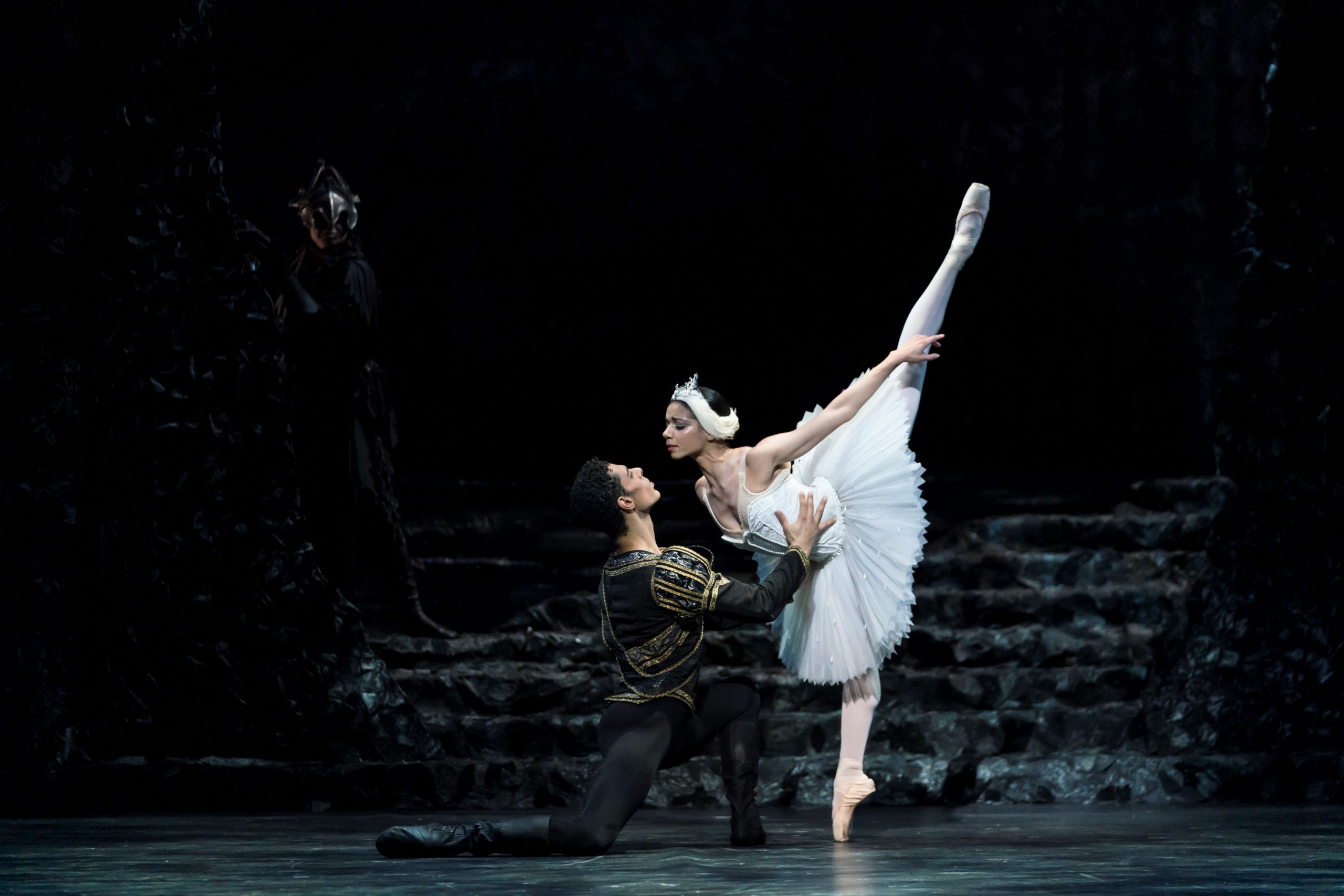
Culture Writer Polly Watton reviews Swan Lake and finds it to be an interesting yet enchanting take on the art form of ballet
Accurately casted and flawlessly performed, Sir Peter Wright’s adaptation of Pyotr Tchaikovsky’s Swan Lake at the Birmingham Hippodrome was breath-taking. Having danced ballet on and off since the age of two, I had actually never attended a ballet before. This accurate adaptation of the classic Swan Lake left me feeling inspired and in awe.
The live orchestra was emotive and gave an incredible performance. From the moment the curtain rose for the first act with the ‘Introduction’ to the ending piece, the melancholy ‘No.29, Andante- Allegro agitato- Alla breve. Moderato e maestoso,’ the Royal Ballet Sinfonia provided a beautiful take on Tchaikovsky’s classics, and a brilliant accompaniment to the ballet.
The Royal Ballet Sinfonia provided a beautiful take on Tchaikovsky’s classics
The set was simple yet complimented each scene well, the stairs at the back switching between a regal setting for act 1 and 3, and a dark naturistic environment for acts 2 and 4 at the lakeside and was accompanied by mood appropriate lighting from Peter Teigen. The costuming throughout was beautifully executed and fit the atmosphere in each scene well.
Act I captivated the audience from the moment the curtain rose, the regal costuming and the famous waltz between Prince Siegfried and his companions giving the important context required for the rest of the show. Prince Siegfried is presented with a crossbow and given choices of women to marry, and a pas de trois is performed with Prince Siegfried and the two courtesans. From the start, it was evident that the casting was impeccable. Prince Siegfried, danced by seasoned principal dancer César Morales, radiated a stoic and proud aura as he danced. Benno’s solo, danced by Haoliang feng, was perfect, and his coupé jeté en tournant deserves an honourable mention. The two courtesans were performed by Karla Doorbar and Beatrice Parma, and their stage presence was outstanding; Beatrice Parma’s flawless technique stood out especially. As this act ended and the short 3-minute break commenced, you could feel the delight across the audience, as everyone sat back and anticipated the remaining show.
Act II transforms the audience to the lakeside and Prince Siegfried and Benno dance as Baron Von Rothbart, in his ominous bird costume, lurks in the background. This is where the use of the set proved to be brilliant, as Rothbart appearing from the top of the stairs and moving up and down prompted an eery feeling. Contrastingly, the introduction of Miki Mizutani as Odette was breath-taking, and the audience soon realises her perfect technique and the chemistry between her and César Morales during their pas de deux. Their chemistry is short lived in this scene, as Rothbart, brilliantly and theatrically portrayed by Jonathon Payn, breaks their adoration up. The famous danse des petits cygnets was flawless. This is an extremely hard dance to perfect as it involves four dancers having to move in perfect unison whilst connected to each other; their pas de chats across the stage were indeed in perfect unison and they performed beautifully. Odette then performed a solo, and her attitude turns deserve a mention as they were technically perfect.
After the interval and back at the palace for Act 3, the elegant and expansive costuming is showcased as the national dances are displayed: a Hungarian Czardas, a Spanish dance, a Neapolitan dance, and a polish mazurka. These are performed exceptionally by the dancers and offer an intriguing intermission from the classical ballet style. As ominous Odile enters the ballroom, Miki Mizutani’s incredible talents are showcased.
These are performed exceptionally by the dancers and offer an intriguing intermission from the classical ballet style
Portraying two extremely contrasting characters such as the delicate and angelic Odette and the deceitful yet alluring Odile, requires immense talent; Mizutani pulled this off exceptionally with flawless technique. The famously difficult 32 fouettés were performed beautifully by Mizutani and received many ‘bravos’ and scatters of applause from the engaged audience. César Morales as prince Siegfried was also showcased brilliantly in this act and illuminated his strong and stoic aura, and perfect technique. The famous black swan pas de deux was captivating and showcased, again, their incredible chemistry. Act 3 finishes in an incredibly tense manner, with a fire pyrotechnic shocking the audience as prince Siegfried falls to the floor in despair, tricked by the evil Rothbart.
As the curtain rolls up for the anticipated final act, thick fog rolls off the stage, preceding the sorrowful feeling of the final act and prompting many ‘wows’ and gasps from the audience. The swan maidens pop up amongst the fog and perform gracefully and in perfect unison as they comfort and protect princess Odette. This scene, the climax of the ballet, is performed perfectly, and the passion and hatred is executed well by Morales, Mizutani and Payn as the three of them fight. The climax continues as prince Siegfried and Odette both decide to end their lives, this act of love finally killing Von Rothbart. As the curtain falls, the body of prince Siegfried is carried to the front of the stage, prompting an ambivalent feeling; the characters both died, but are united in eternal love.
With the curtain call brought a standing ovation and cries of ‘bravo’ across the theatre, a well-deserved reaction to a technically flawless, emotive, and beautifully classic performance. Although Mizutani performed Odette and Odile faultlessly, on the 17th and 18th of February the audience can expect Berlin State Ballet’s Polina Semionova to take over the role. This will add an exciting dimension to the delightful performance that I got to witness on Wednesday 15th February.
Rating: 5/5
Enjoyed this? Read more from Redbrick Culture!
Ballet Review: The Nutcracker – A Double Perspective
Comments